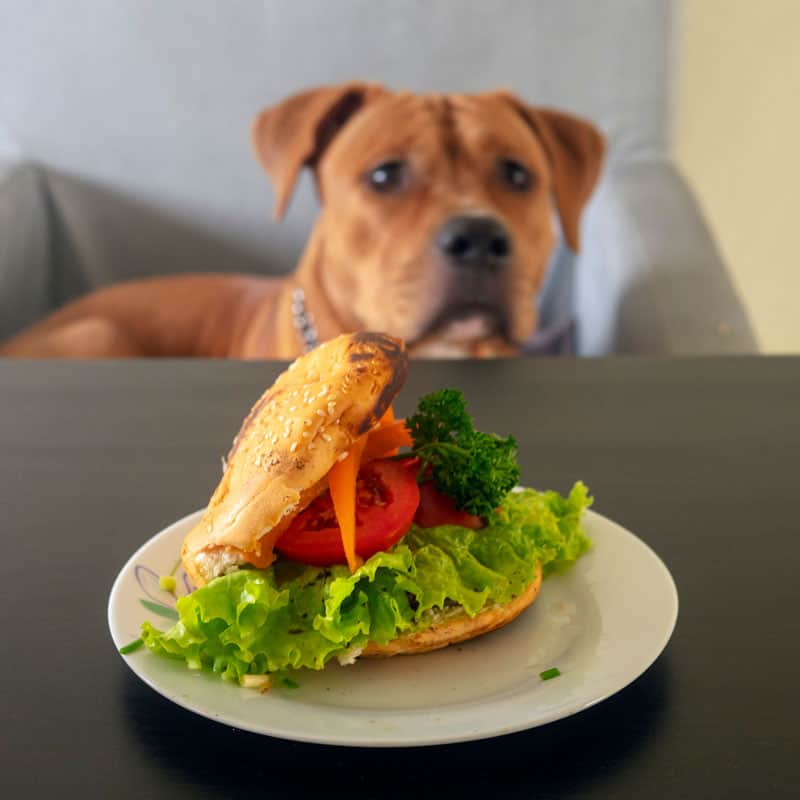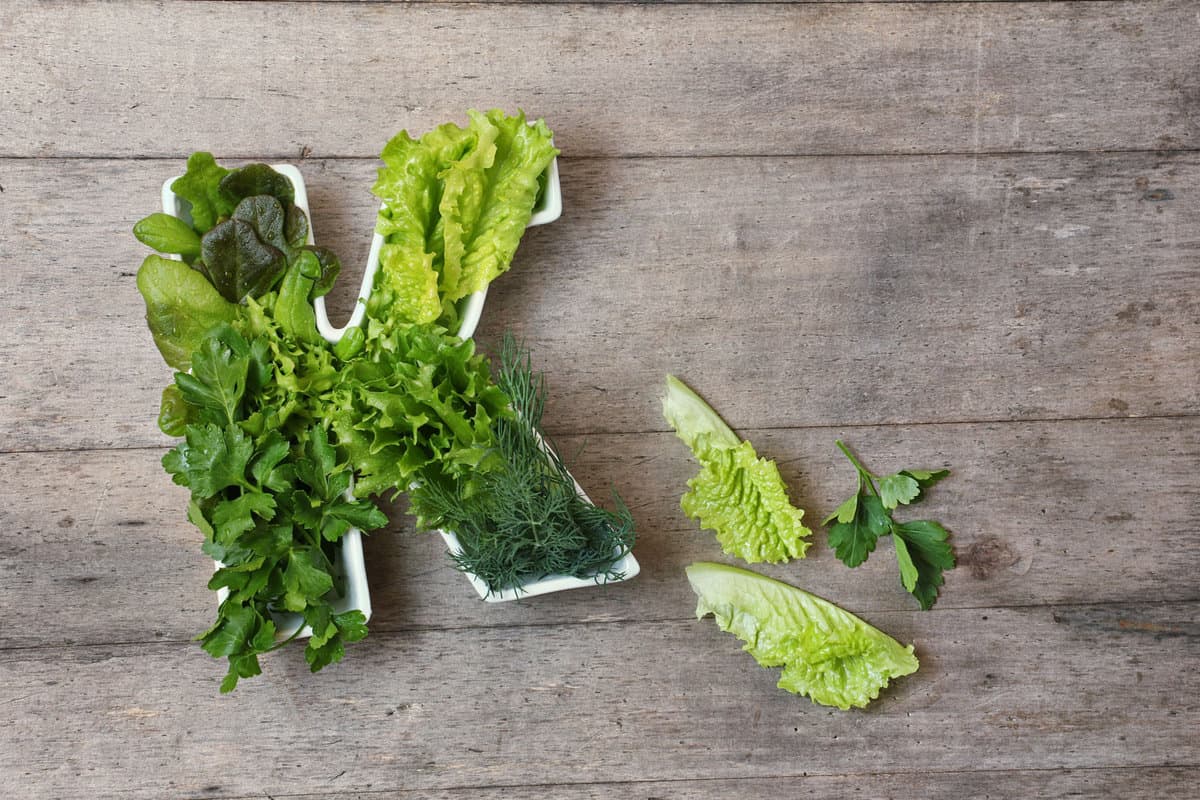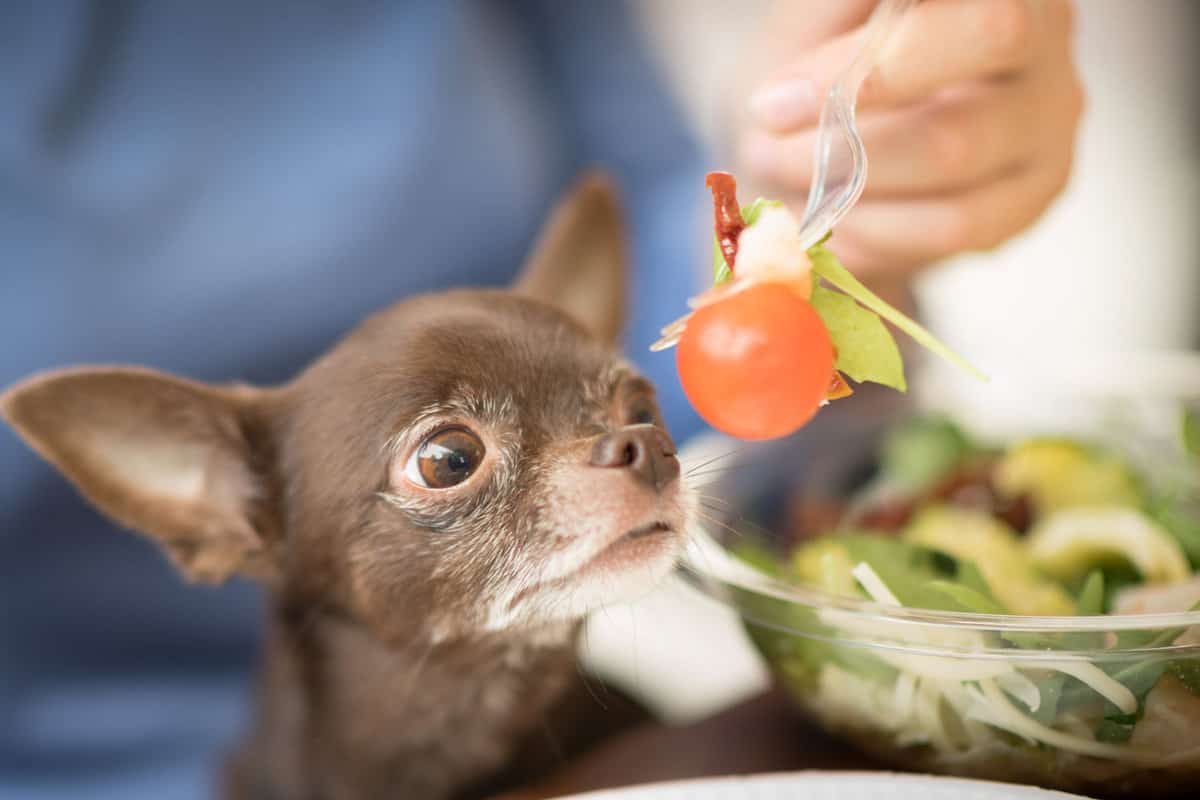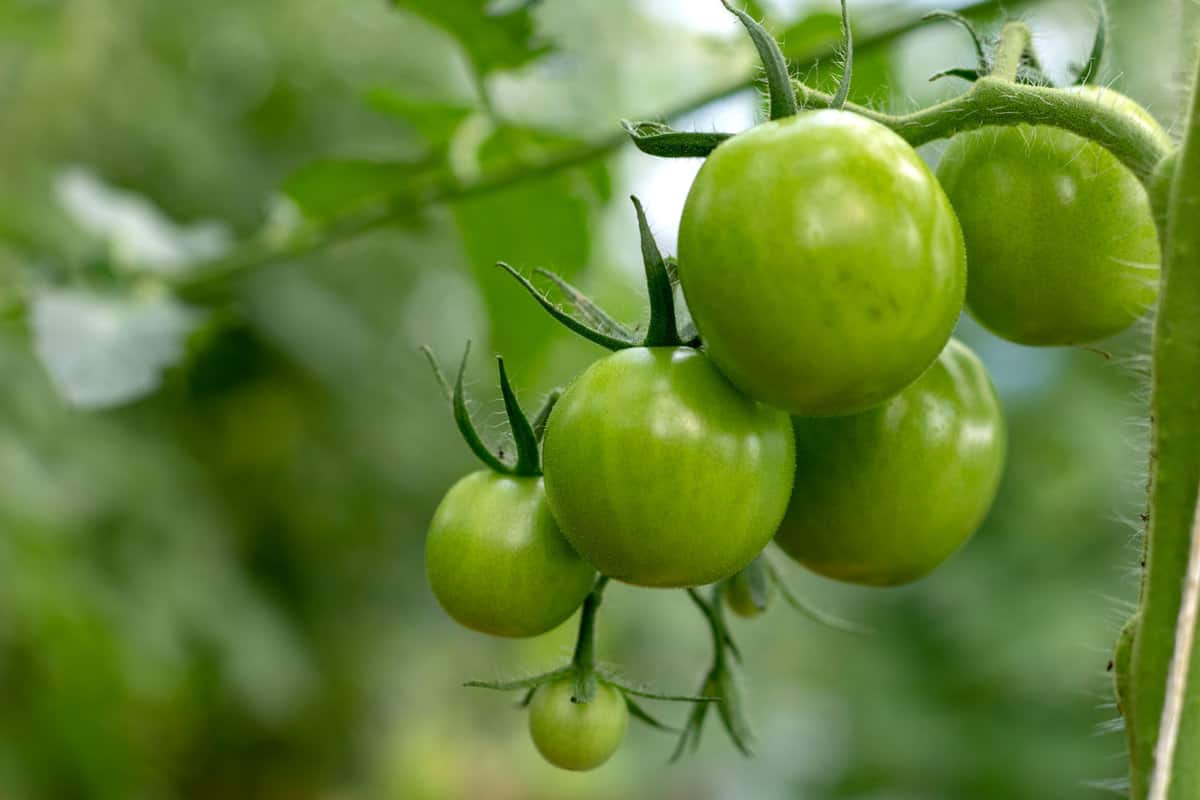As pet owners, it's natural to wonder which human foods are safe for dogs to consume. One common question is whether dogs can eat lettuce and tomatoes.
Lettuce is generally considered safe for dogs to eat. Being low in calories and high in water content, it can provide a refreshing and hydrating snack for your pup.
However, it's important to remember that lettuce doesn't offer much nutritional value for dogs, so it should be given in moderation alongside a balanced diet.
When it comes to tomatoes, the answer is a bit more complex.
While ripe tomatoes are considered nontoxic and can be given to dogs in small amounts, it is crucial to avoid feeding your dog any unripe tomatoes or parts of the tomato plant.
These can contain toxins that are harmful to your pet, potentially leading to health issues. In the following discussion, we will delve deeper into the suitability of these foods for our four-legged companions.
Can Dogs Eat Lettuce?
Lettuce is generally safe for dogs to consume. Varieties such as romaine, arugula, and iceberg do not contain any harmful ingredients for dogs.

In fact, lettuce is composed of 90% water and is a low-calorie treat.
However, it's essential to remember that dogs have different nutritional needs than humans, and while lettuce is not harmful, it may not be the most nutritious option.
Learn more: Are Skimmia Berries Poisonous? [Inc. To Dogs, Cat, Birds, Or Humans]
Benefits of Lettuce
Lettuce can provide several benefits to your dog when fed in moderation. These benefits include:

- Hydration: Since lettuce is composed mostly of water, it can help in keeping dogs hydrated, especially during hot summer days.
- Fiber: Lettuce contains a small amount of fiber, which aids in digestion and can help dogs with constipation issues.
- Low-calorie treat: As a low-calorie option, lettuce can be an excellent treat for dogs on a weight-loss plan or as a healthier alternative to processed treats.
Concerns and Risks
While lettuce is generally safe for dogs, there are a few risks and concerns to consider:
- Choking hazard: Large pieces of lettuce can pose a choking hazard for small dogs or those who tend to gulp their food down. It's best to chop the lettuce into bite-sized pieces for their safety.
- Pesticides: Conventionally grown lettuce may contain pesticides, which can be harmful to dogs. Washing the lettuce thoroughly or opting for organic varieties can help mitigate this risk.
- Not a complete diet: Lettuce should never replace a balanced and nutritionally complete diet specifically formulated for dogs. It should only be given as an occasional treat.
Learn more: 7 Low Light Indoor Trees That Are Safe For Dogs
Can Dogs Eat Tomatoes?

Dogs can eat tomatoes, but it's important to be aware of which parts are safe for them to consume and which parts you should avoid giving them.
Safe Parts of a Tomato
Ripe tomatoes are considered nontoxic to dogs and can be fed in moderation as an occasional snack. It's best to give your dog only the red, juicy part of a ripe tomato.
This part of the tomato contains essential nutrients like vitamins A, C, and K, potassium, and fiber.
To prepare tomatoes for your dog, follow these steps:
- Wash the tomato thoroughly to remove any dirt or pesticides.
- Remove the green stem and leaves.
- Cut the tomato into small, manageable pieces, making sure to remove any seeds.
Dangers of Unripe Tomatoes
Unripe, green tomatoes contain a substance called solanine, which can be toxic to dogs in large amounts. Solanine can cause gastrointestinal issues, including vomiting, diarrhea, and abdominal pain.

To keep your dog safe, always avoid feeding them unripe tomatoes.
Toxic Parts
While the red, ripe part of a tomato is safe for dogs, other parts of the plant, such as the leaves, stem, and unripe tomatoes, can be toxic.
These parts contain harmful substances like solanine, which can cause various health problems in your dog if ingested.
To ensure your dog's safety, always remove the green parts of a tomato before feeding it to them.
Stick to ripe tomatoes in small amounts and monitor them for any signs of discomfort or illness after consuming the fruit.
Serving Suggestions
When it comes to feeding your furry friend, it's important to provide them with a well-balanced diet. Offering your dog lettuce and tomatoes can be a healthy addition to their meal plan.
Here are some serving ideas to treat your canine companion in a delicious and nutritious way.

Dogs can enjoy both ripe tomatoes and lettuce in moderate amounts. To start, try chopping up small pieces of ripe tomato and mixing them into your dog's regular food.
Remember to avoid feeding them green or unripe tomatoes, as they may contain harmful toxins for canines.
When it comes to lettuce, one option is to create a lettuce wrap filled with their favorite lean protein like cooked chicken or turkey.
Simply take a large lettuce leaf, place the protein in the center, and fold the leaf to create a wrap your dog will love. This healthy and low-calorie snack is ideal for weight-conscious pups.
Some dogs may prefer their veggies lightly cooked or steamed. In that case, you can steam small pieces of tomato and lettuce to make them softer and easier for your dog to chew.
Alternatively, blend the veggies into a smooth puree and mix it with their regular food. This method adds a boost of nutrients without drastically changing the texture of their meal.
Adding vegetables like peas and carrots can offer variety and additional nutrients for your dog. Remember to always introduce new foods gradually and watch for any adverse reactions.
With these serving suggestions, your dog will be able to enjoy the benefits of lettuce and tomatoes in a tasty and safe way.
Remember to keep it in moderation, as too much of a good thing can cause digestive issues. Now, go ahead and treat your beloved pet to a delicious and nutritious snack.
Read more: Is Mulch Bad For Dogs To Eat Or To Walk On? – Here’s What You Need To Know!
Alternative Fruits and Vegetables for Dogs
When it comes to providing a healthy diet for your furry friend, there are plenty of fruits and vegetables that can safely be included as an occasional treat or snack.
Some dog owners might find that their pets enjoy the crunch of lettuce or the juicy taste of tomatoes, but it's essential to diversify the options for your dog's diet.
One great option is peas which can be in the form of green peas, snow peas, sugar snap peas, and garden or English peas.
They are rich in vitamins and minerals, which makes them a nutritious treat for your canine companion.
Another safe and enjoyable choice for dogs is watermelon. When feeding this fruit to dogs, make sure to remove the seeds and rinds, as these parts can cause digestive issues.
Chunks of frozen watermelon can be a refreshing and hydrating treat on hot days.
Including high-fiber options such as fruits and vegetables in your dog's diet can even help with constipation.
Most fruits and vegetables are rich in dietary fiber and water content, which helps to keep their digestive system regular. However, avoid giving your dog grapes, raisins, and onions, as they can be toxic to dogs.
Incorporating alternative fruits and vegetables into your dog's diet can contribute to their overall health and well-being.
Be sure to choose safe options and always monitor your pet when introducing any new food to them to avoid potential issues.
When to Contact a Veterinarian
Dogs can eat lettuce and ripe tomatoes in small amounts, but pet owners should be cautious when feeding these foods to their furry friends.
If a dog consumes large quantities or shows signs of a negative reaction, it's essential to contact a veterinarian immediately.
Sometimes dogs might accidentally eat parts of a tomato plant that contain solanine, a toxic substance found in the leaves and green parts of tomatoes.
If a dog exhibits symptoms like vomiting, diarrhea, or lethargy after consuming tomatoes or tomato plants, it's crucial to seek veterinary advice.
Feeding lettuce to dogs is generally safe, but overfeeding can lead to gastrointestinal issues such as gas, diarrhea, or vomiting.
If a dog experiences these symptoms after consuming lettuce, contacting a veterinarian is a must. Lettuce should be introduced gradually to a dog's diet and offered in small portions.
Moreover, if a dog has a unique dietary requirement or is known to have a sensitive stomach, it's wise to consult with a veterinarian prior to adding any new foods to their diet.
In Closing
It is safe for dogs to consume both lettuce and tomatoes in moderation. Lettuce, including varieties such as romaine, arugula, and iceberg, is generally harmless for dogs, as it is made up of 90% water and is low in calories.
On the other hand, tomatoes can be fed to dogs, but only in small quantities and provided that they are ripe. Unripe tomatoes can be harmful to dogs due to the presence of a toxin called solanine.
It is important to remember that while these foods can be a healthy addition to a dog's diet, they should not be the primary source of nutrition.
Incorporating vegetables into a dog's diet can provide them with essential vitamins and minerals, but it is crucial to research each food item to ensure it is safe for consumption.
When in doubt, consult a veterinarian or an expert in canine nutrition for guidance on what is suitable for your furry friend.
